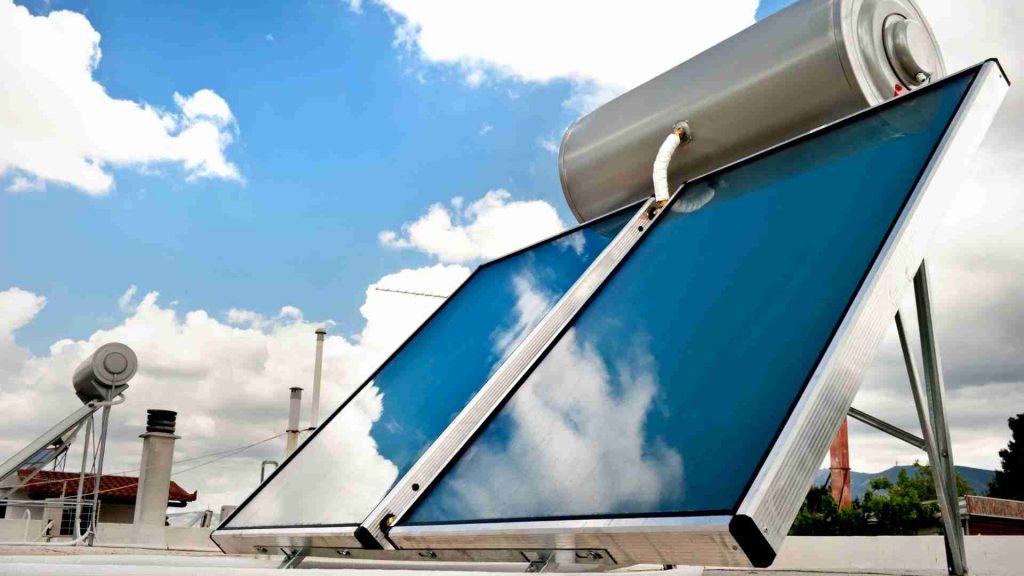Solar Geyser Installation Embracing the Sun's Energy
The demand for solar geyser installation is on the rise due to South Africa’s increased power outages.
Sustainable, renewable energy has led us to harness the power of the sun. Solar power, with its endless, clean supply, has presented itself as an effective solution to many energy needs.
We demystify the fundamentals of solar geysers, illuminate the factors influencing installation, and underscore the advantages of adopting this eco-friendly system.
How does solar geyser installation work?
Solar geyser installation begins with the selection of the appropriate system size and type based on the household’s hot water needs. Plumbers will also take into account where the customer lives and the local climate. Installation professionals then choose a location with maximum sunlight exposure, usually on the roof, ensuring there are no obstructions (trees or buildings) that could shade the solar collector.
Direct (or open-loop) systems: Water circulates through a collector, which heats it using the sun’s energy. The solar system stores this heated water in a tank, making it ready for use. Direct or open loop systems are most efficient in warmer climates, where there’s little risk of freezing.
Indirect (or closed-loop) systems: In a closed-loop solar heating system, suitable for colder climates due to its robustness, a heat transfer fluid like glycol circulates through the solar collector. This fluid actively absorbs heat and then transfers it to the water in storage via the heat exchanger.
Both systems distribute the heated water throughout the household as required. Install a backup heater to ensure a continuous supply of hot water when solar radiation falls short.
Lastly, make sure that the system integrates correctly with the property’s existing plumbing and heating systems. Run tests to confirm that your solar geyser installation is successful and operates correctly.
What are the key factors to consider before installing a water heater?
Before plunging into a solar geyser installation, it’s crucial to take into account several factors to guarantee the best performance and reap the long-term benefits. Some of these considerations include…
Location – The location of the installation site significantly impacts solar geyser efficiency. Areas with higher solar radiation and longer hours of sunlight are ideal for solar water heating. Ensure that there are no trees or buildings blocking the sun from the solar panels.
Solar collector orientation and tilt – Installers usually use rooftops to install solar geysers, as rooftops are normally exposed to the most sun.
The tilt of the solar collector is another important factor. It refers to the angle between the collector and the horizontal surface. Adjusting this angle correctly maximizes the amount of solar radiation the collector can capture, enhancing the system’s overall efficiency.
The ideal tilt angle depends on the location’s latitude and the time of year. For year-round use, the optimal tilt is usually equal to the geographical latitude. For example, if the latitude is 40 degrees, the collector is typically tilted at a 40-degree angle. However, some adjustments may be necessary to account for seasonal variations in the sun’s position.
Solar geysers can operate efficiently by optimizing solar collection and tilt, delivering a reliable hot water source while reducing energy costs and environmental impact.
For optimal solar energy capture throughout the year, install the collector to face directly south if you’re in the Northern Hemisphere and directly north if you’re in the Southern Hemisphere. Additionally, adjust the tilt angle according to the latitude of your location.
Geyser Size – Deciding which size solar geyser to install, is crucial and depends on the household’s hot water demand, sunlight availability, and the required storage capacity. A general guideline is to provide 1.85 square meters of collector area per person in the household and about 5.7 to 7.6 litres of storage per square foot of collector area.
Plumbing and System Integration – Make sure that the solar geyser system is compatible with the existing plumbing and water heating systems. This includes assessing the suitability of the current storage tank, circulation system compatibility, and the possibility of integrating the solar geyser with traditional water heaters for backup during rainy days or winter when there is less solar radiation.
Regulations and Incentives – Compliance with local building codes and regulations is mandatory when installing a solar geyser system. Additionally, it’s worth exploring local incentives or rebates that can help offset the cost of installation.
In South Africa, the installation of solar geysers is subject to certain compliance and regulations to ensure safety, quality, and performance.
The South African Bureau of Standards (SABS) is the national standardization institution, tasked with developing and promoting standards. Solar geysers must meet the standards set by the SABS, and installers should use SABS approved products.
One such standard is SANS 1307, which applies to domestic solar water heaters. It outlines the performance requirements that these systems must meet. Another key standard is SANS 10106, which details the installation, maintenance, and repair of solar water heating system installations.
Furthermore, any person installing a solar geyser must have a plumbing qualification recognized by the Plumbing Industry Registration Board (PIRB). The PIRB is a professional body for South Africa’s plumbing industry, and registered plumbers must comply with the regulations and standards it sets.
Lastly, it’s also important to be aware of local municipal regulations. Some municipalities may have specific regulations relating to solar geyser installations, such as the need for building approval.
Complying with these regulations ensures the safe and effective operation of solar geysers, while also potentially qualifying home-owners for incentives and rebates.
Consult your nearest plumber for a site visit and consultation to choose the right eco-friendly solar geyser installation based on your location, the weather conditions and your household or business needs.

